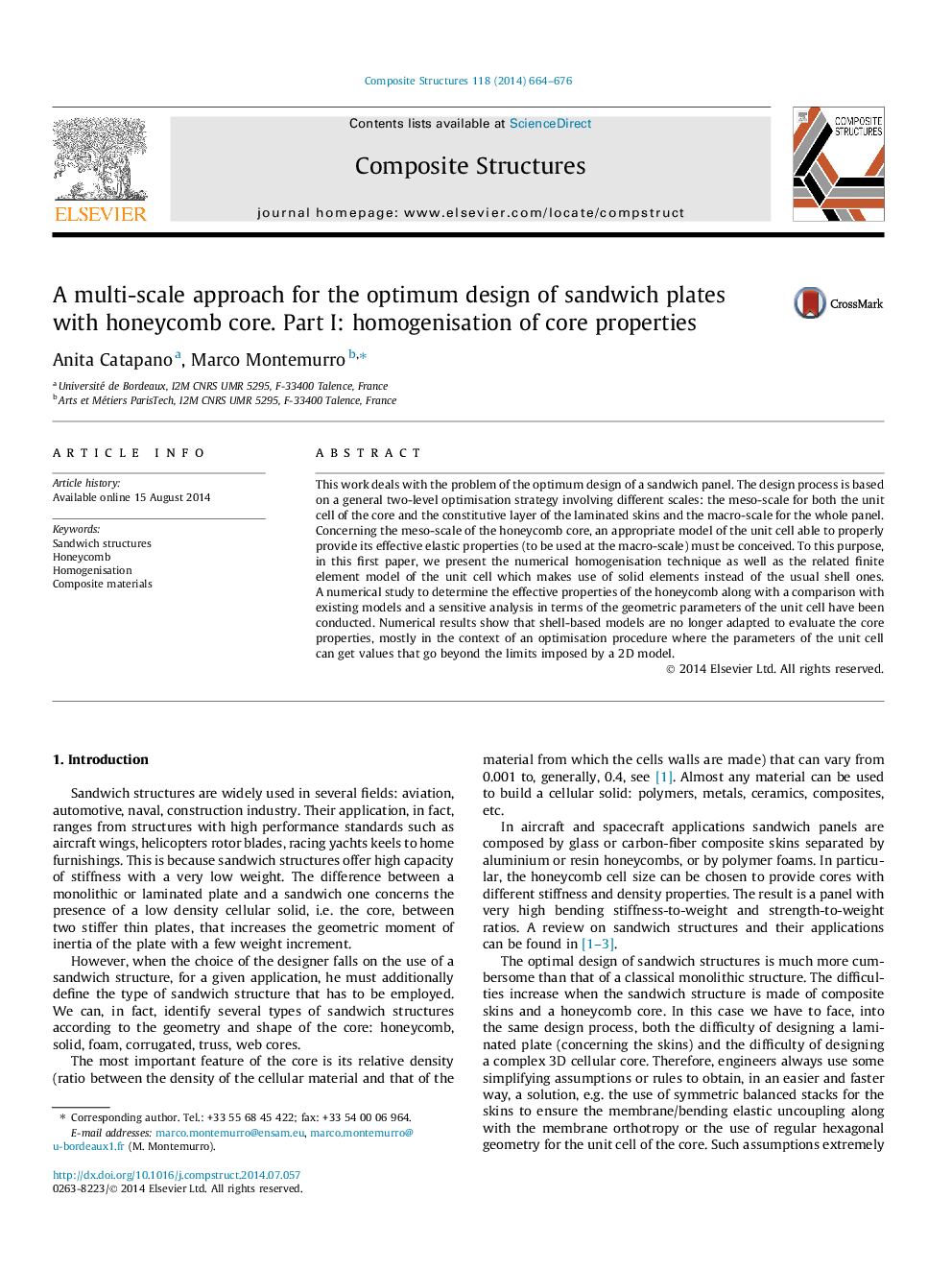| Article ID | Journal | Published Year | Pages | File Type |
|---|---|---|---|---|
| 6707724 | Composite Structures | 2014 | 13 Pages |
Abstract
This work deals with the problem of the optimum design of a sandwich panel. The design process is based on a general two-level optimisation strategy involving different scales: the meso-scale for both the unit cell of the core and the constitutive layer of the laminated skins and the macro-scale for the whole panel. Concerning the meso-scale of the honeycomb core, an appropriate model of the unit cell able to properly provide its effective elastic properties (to be used at the macro-scale) must be conceived. To this purpose, in this first paper, we present the numerical homogenisation technique as well as the related finite element model of the unit cell which makes use of solid elements instead of the usual shell ones. A numerical study to determine the effective properties of the honeycomb along with a comparison with existing models and a sensitive analysis in terms of the geometric parameters of the unit cell have been conducted. Numerical results show that shell-based models are no longer adapted to evaluate the core properties, mostly in the context of an optimisation procedure where the parameters of the unit cell can get values that go beyond the limits imposed by a 2D model.
Related Topics
Physical Sciences and Engineering
Engineering
Civil and Structural Engineering
Authors
Anita Catapano, Marco Montemurro,
